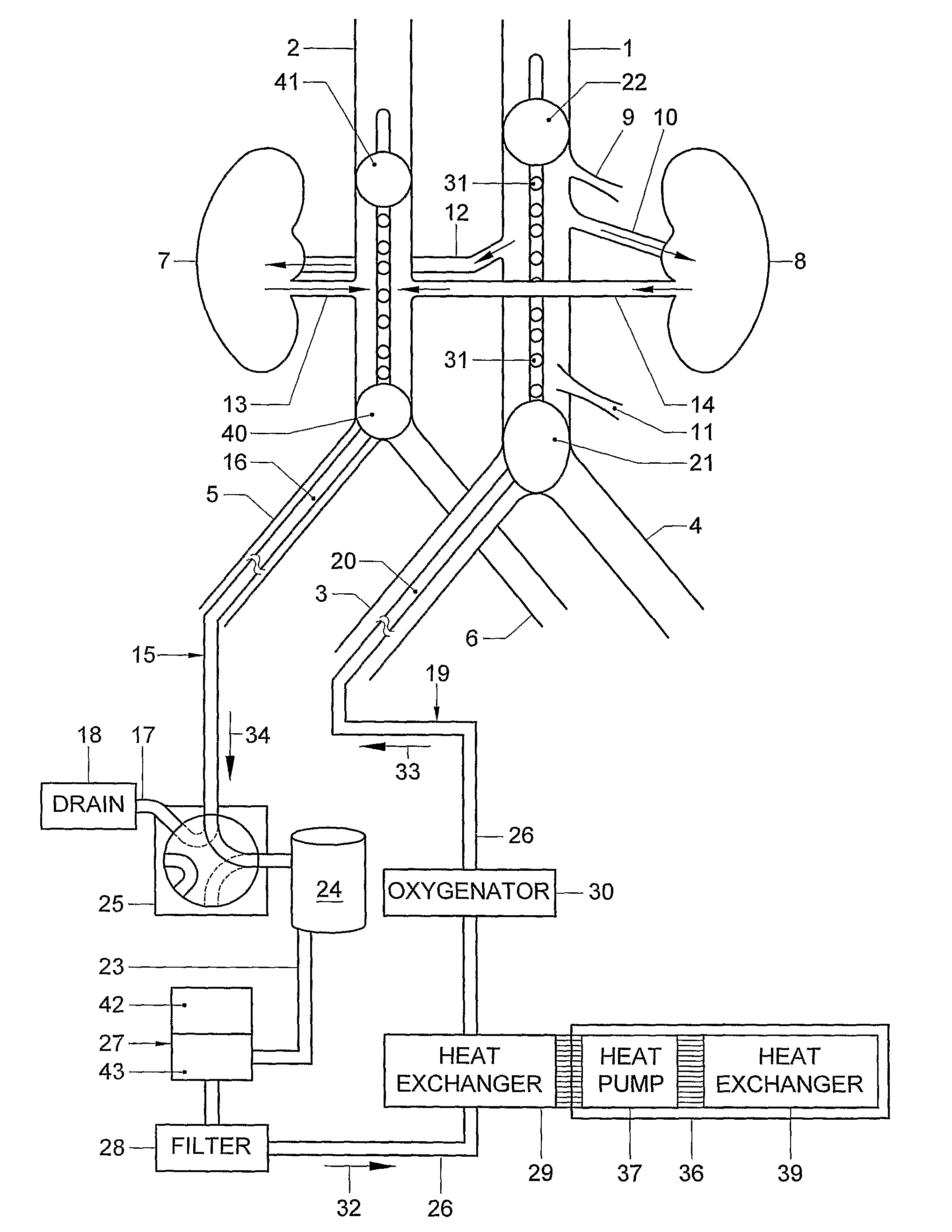Method and a system for prolongation of the viability of a donor organ
a technology of organ viability and postmortem prolongation, which is applied in the field of method and system for prolonging the viability of an organ, can solve the problems of tissue damage, difficult or impossible immediate explantation of organs, and complicating procedures, so as to reduce the risk of warm ischemic trauma and improve the viability of donor organs.
- Summary
- Abstract
- Description
- Claims
- Application Information
AI Technical Summary
Benefits of technology
Problems solved by technology
Method used
Image
Examples
Embodiment Construction
[0018]In FIG. 1, an aorta 1 branches out into the iliac and femoral arteries 3, 4. Femoral and iliac veins 5, 6 merge into a vena cava 2. The abdominal organs of the donor communicate with the aorta via arteries and communicate with the vena cava via veins. For the sake of simplicity, of the abdominal organs, only kidneys 7, 8 are shown. Furthermore, the renal arteries 10, 12, other arteries 9, 11 leading to other organs, of which transplantation may be intended as well, and the renal veins 13, 14 are shown as an illustrative example of portions of a donor body with which a system according to the invention may interact. Although the method and system according to the invention are illustrated by an example in which only preservation of the kidneys is shown, the invention may also be applied for the preservation of other organs, such as the liver or the lungs.
[0019]Hereinafter, first the example of an application of the invention illustrated by FIG. 1 is discussed. Preservation of t...
PUM
 Login to View More
Login to View More Abstract
Description
Claims
Application Information
 Login to View More
Login to View More - R&D
- Intellectual Property
- Life Sciences
- Materials
- Tech Scout
- Unparalleled Data Quality
- Higher Quality Content
- 60% Fewer Hallucinations
Browse by: Latest US Patents, China's latest patents, Technical Efficacy Thesaurus, Application Domain, Technology Topic, Popular Technical Reports.
© 2025 PatSnap. All rights reserved.Legal|Privacy policy|Modern Slavery Act Transparency Statement|Sitemap|About US| Contact US: help@patsnap.com



